A Year Full of Blessings
2014 was a year full of planting new seeds and providing them with shelter and plenty of nutrition so they could flourish, and with the coming of the rains they shot up and are now surprising us with their vitality, so it looks like all of those efforts will bear abundant fruit in this new year that has come to us bringing many blessings and promises of plentiful harvests.
I know about permaculture design, i like gardening, building with my hands, i already did some constructions, but each time i realise there a lot of things to learn more... I am also an activist (passific). In Lyon, where i used to live, i organised the Transition Town community http://transition-lyon7.over-blog.com/
This week I'm volunteering, or woofing in the 8thlife farm. This farm has the particularity to apply a maximum permaculture principles to be self-sufficient at all levels. http://8thlife.org
We finally took down the old (experimental) greenhouse so we can expand the walnut forest we started on this terrace.
We had already moved (and expanded) the tree nursery to under the big avocado in Fortuna's house, and the seedling nursery to the long thin garden in the patio.
Celi had a very good idea to make a greenhouse-wall in the new patio to house the seed trays in a protected place as near to the house as possible, and we can't get any nearer than this.
We've met whole groups of these weather tourists over the years, and we can certainly vouch for the fact (which took us many years to notice, as a pattern) that it does seem to be that the most (long-term) 'vegan/vegetarian' people are the most difficult to live with, because they seem to have very little tolerance for discomfort and are especially moody, and so very unrealiable.

 These are our new canarian black pigs (with our baby goat in the foreground).
These are our new canarian black pigs (with our baby goat in the foreground).
 We got the two piglets as a present for our 9th year anniversary - from getting the keys to the first farm, which was on Valentine's day 2006 - although it's only 4 years since the start of the ecovillage project, which we launched in 2011.
We got the two piglets as a present for our 9th year anniversary - from getting the keys to the first farm, which was on Valentine's day 2006 - although it's only 4 years since the start of the ecovillage project, which we launched in 2011.
and she is doing a wonderful job as our Volunteer Coordinator, thanks to which we have a big team right now working on improving the infrastructures of the EcoVillage project.

So far she has published these articles:
Building a Relationship with the Land.
While I’m Alive, I Want to Talk About Death.
Take Off The Spangly Gold Mankini: Tips For Enlightenment.
Why I’m Terrified of Porn.
It’s Time to Change Our Story.
Breaking Free: The Invisible Prison of an Industrialized Life.
And this is another one she wrote especifically about her experience here:
Living in 8th Life
The mechanisms of industrial society mean that most of us are indoctrinated into a system that does it’s very best to enslave us; it certainly seems that way at least. It’s a comfortable prison cell, but none the less our abilities to design our own communities, and our own lives, seem limited due to our industrialised education, media and culture. Those of us who do escape face a journey into the unknown and sometimes a complete revaluation of our priorities.
For escapees like me the 8th Life project is a haven.
Born in London I have grown up with very little contact with the other aspects of nature and my upbringing meant that I was expected to follow the job/mortgage/family path. Luckily I am blessed with parents who, although seemly entrenched in the system, are secret radicals who want our western culture to change as much as I do.
I’ve discovered however that the comforts of city life are difficult to let go of. A hot bath and internet in bed are some of my favourite vices, as well as fresh coffee and tons of sugar.
What I think is great about this project is that it’s set up to take into account the physical and emotional difficulties that come with transitioning to a more sustainable, community based existence. It seems that in cities, although we are crammed in together, we are actually very isolated. Conflict doesn’t seem to be an everyday problem because we simply do our best to avoid each other. Living community, however, means that managing conflict and personal relationships is one of the most important things to do. One can learn how to grow the best tomatoes in the world, but if the personal relationships between people are poisoned then no one is going to be able to enjoy those tomatoes, or even organise how to grow them.
There are various tools that are used here to add manure to our personal relationships. One of these are ‘think and listens’ where we each take turns to say what’s on our minds for a minimum of 5 minutes, while the other person gives us their full attention. At first it’s uncomfortable, especially if you’ve come from a background where listening to each other is a rare, or non-existent, occurrence. However, after a while it’s clear that not only does it help to ‘discharge’ negative feelings, often trapped within our bodies, it also creates instant bonds and feelings of trust.
Another tool use here is appreciation. Again, it can be extremely uncomfortable to hear good things about oneself, and even uncomfortable to express appreciation for another. But after a session of appreciation everyone glows with positive energy.
To support escapees physically we have Transition House; where we are presented with options on varying degrees of sustainability. For example, we have a compost toilet alongside a normal toilet; a boiler powered shower and also a solar shower; we have a saw dust washing up system as well as washing up liquid.
One of my own transition challenges has centred on my own waste aka poo. I’ve absorbed a belief that poo is bad, dirty and to be avoided as much as possible. This means that in the city I used as much toilet paper as I could to ensure I had no contact with this type of waste at all. So, when I asked to try using water instead of toilet paper I bulked at the idea and my stress levels went through the roof. However, the solution came with redesigning the placement of the toilet. Although I struggled with using water from plastic bottles (because in my mind I was still touching poo) when we placed the toilet in bathroom, next to a bidet, I was happier to use the running water to wash. This means that even though I’m still using water to clean myself I’m using a fraction of what is used in the manufacturing of toilet paper, and there’s also no waste; a big transition for a city girl like me. I’m also coming to realise that my ‘waste’ is actually a valuable resource that the soil is happy to accept.
8th Life is a perfect place for those of us who are looking for a way out of the destructive culture and seems to draw new escapees like bears to honey as we take our first steps towards a more empowered and sustainable existence. It’s like we intuitive know that here we will be nurtured and supported into our rebirth as humans who part take in the cycles of life, not just the constant one-sided consuming we experience in industrial life.
Then, like sick cells converted in to healthy ones, we each go out and spread our new found knowledge and show the rest of our friends and family that escape is possible.
I feel very lucky and grateful to be part of this very special project. Thank you Stella and Jose.

You can also email us at

Here you can see what our hills and valleys look like during the almond flower season.
All our surroundings are full of these very generous trees,
that provide us with an abundance of beauty in spring,
shade and food for the sheep during the summer (who love eating the leaves that these trees shed during the dry season,
where there are not many other green things for them to eat)
and many, many delicious almonds in autumn,
which were planted by the ancestors of the families that established this village,
who got their income mostly from growing and selling almonds.
Here we've tried to compress winter and spring into one newsletter, and we celebrated our 9th Anniversary too... so as usual it's too long, but we hope you find inspiration in it to change your life & environment.
In March the bees swarmed again and here we're giving them a new home, in a horizontal top-bar beehive Jose built, the second one, with an added peek-window so we could look inside and see how the bees are doing.
Mushrooms!
| With the coming of the rains the woods all around us filled up with lots of delicious mushrooms again, and we have been enjoying them a lot, learning to identify new ones and figuring out ways of making edible some that are not commonly eaten. It has been a particularly good time for mushrooms because we had rains interspersed with sunny warm weather, and we can get a box full just by stopping off in the woods on our way back from the nearby village, where we go to visit friends and buy stuff.
We are very lucky to have Cecilia Hosinski as a neighbor, a mushroom expert and
author who lives just at a 10mins walk from us, so apart from going to the
talks she has been giving, Jose has visited her a few times to bring her some presents from our farm and ask for help in identifying new species (Jose has been learning about mushrooms from time, as it's one of his passions, and now can recognize most edible species around here).
|
|
|
We have mostly been eating the very abundant nacidas (Rhizopogon luteolus), níscalos (Lactarius deliciosus and Lactarius sanguifluus) and tortullos de cabra (Russula delica), and we also have been figuring out how to make edible some other abundant but not commonly eaten mushrooms, like Volvopluteus gloiocephalus, Suillus bellini, Lactarius tesquorum and Lycoperdon perlatum. |
We also came up with a particularly fun way of drying the excess mushrooms by making these organic Christmas decorations. In the background there are sacred tobacco leaves, a very interesting healing plant we are enjoying learning how to cultivate and cure (Jose has a Cuban background and his grandmother is a traditional Cuban healer, so he is very interested in exploring medicinal and teacher plants). |
It was very beautiful to have mushrooms popping up everywhere, and seeing them appear, grow and develop throughout the days. These are Volvopluteus gloiocephalus, which are delicious if prepared correctly.
Héloïse the Architect
We enjoyed the delightful company of Héloïse at the end of November, an architect who did these beautiful drawings.
In
just two weeks she made us a 3D sketchup plan of the whole farm (that
we can now tweak by putting more accurate measurements as we go) and
numerous drawings and concept sketches for the projects we are planning
to do next.
| Here is a short bio in her own words: | Héloïse measuring the Oya terrace (where the workshop is) to make a scale map. |
I
am joining the project for 2 weeks, i am having now one sabbatical year
from september 2014 to 2015, and plan to travel around the world.
I
arrived in Canarias to meet a skipper and a sailingboat to cross
atlantic, but he had to many technical problems, so he won't come. It
makes me the opportunity to discover, engage myself here.
my website : www.heloise.in
I used to work 5 years as architect for eco-building in Lyon (France) named
TRIBU http://www.tribu-concevoirdurable.fr/
TRIBU http://www.tribu-concevoirdurable.fr/
I know about permaculture design, i like gardening, building with my hands, i already did some constructions, but each time i realise there a lot of things to learn more... I am also an activist (passific). In Lyon, where i used to live, i organised the Transition Town community http://transition-lyon7.over-blog.com/
and Guerilla Gardening collective. www.gglyon.blogspot.com
I founded also a collective of artists and architects to "create a new world" http://l-alter-native.tk
Translation from her blog about her experience here:
This week I'm volunteering, or woofing in the 8thlife farm. This farm has the particularity to apply a maximum permaculture principles to be self-sufficient at all levels. http://8thlife.org
Permaculture
is a design approach that ethics is "taking care of the land, taking
care of the human and share equitably." Permaculture design is based on
sustainability, "sustainability", which according to Bill Mollison, the
ability of a system to create more energy or matter in his life that he
needs to run itself, in other words, a higher return 1. ecosystems are
based on this principle, not machines ... in designing such systems, it
is necessary to have a systemic vision, holistic with basic principles
such as: the economy priority of human effort, but also resources
(energy, water, space ...), then looping resources and waste by
maximizing the interdependencies between components and redundancy where
each element many roles and resilience, vital functions are performed
by several elements.
8thlife
the project, such as its authors, is exciting. Stella, Italian by birth
lived 20 years in England, she has worked since 1995 as coordinator in
an association supporting a permaculture project and urban agriculture, a
transition initiative before its time, it is a pioneer in the field.
She moved there 10 years ago in La Palma, preferring the amenities of
the island (climate, clean air, etc ...) by being "poor" rather than to
make a career in London, paying a flat out price in stress and
pollution. There are 4 years old, she bought the farm to create an
eco-village .. Jose Cuban origin and Canary adoption, it is a "young
man" (22 years), very intelligent, computer, it joined the farm there is
2 years old. They are also trainers permaculture. They are responsible
for creating a permaculture training that differs from the PDC
(Permaculture basic degree), to the extent that the theoretical part is
completely online. The idea is that the internet brings together the
theoretical field of knowledge, it is accessible to all, can be seen and
reviewed by the students, but organized in a training process on the
website. http://www.permaculturescience.org. Then, students can come and
experience the principles on the farm, but the best is to try at home
and share the experiences of each then. Their approach is exciting to
the extent that permaculture is not just to agro-ecology issues but
treats all topics including http://www.integralpermaculture.org
socioeconomic.
I
was interested in the project and they were interested in my
architectural skills in green building and my various illustrations. So,
I draw, I make little alternative projects for the farm elements ...
I'm really having a great time! I have my little room in a dependency,
with kitchen, bathroom and living room, it's great, but the problem here
is that it's cold at night (equivalent climate in the fall or spring
Norman ... ) dropoff window
What I do most here is the animal eco-architecture, my main sponsors are animals! Below the different projects.
The
chicken tractor: A "classic" permaculture, chickens are used to scrape
the soil before planting, hence the name, and it replaced the "tractor"
in addition to eating rubbish, lay eggs and fertilize the ground with
their droppings.
The herd: Every day, their four sheep graze in nearby fields, "clippers" on
legs. I drew a sheep for them and a dome for the shepherd.
The
GuineaPig Hotel: Another project to rebuild their hutch guinea pig
because, yes ... they eat guinea pigs ... they're "paleo" they eat meat
and fish and plants, no processed food, no wheat, rice, pasta ... like
the caveman, which would be the food suited to our constitution.
Although I do not
really
share, I understand their food self-sufficiency approach. It is also
found that the guinea pig is generally easy to breed, cute, less
susceptible to disease than rabbits, with an equivalent taste, and South
America, it is a typical dish ...
Although I do not
Kitchen for volunteers and students: collective kitchen, closed with windows of different sizes.
Dry toilets and solar shower: They already exist but for fun I have also illustrated.
How the farm functions
|
And
I help once in a while for common tasks, I walk to Palma. There are
also other volunteers from the farm: André (Canadian carpenter),
Cristina (instit 'steiner, Swedish) and an Italian couple (organic
producer in Calabria).
It is still an island
with beautiful scenery, terrain, nature, sky, stars ... I met tourists
by car and went with them in their visits ... Puertito Puntagorda, los
Llanos, Tazacorte Javier (topographer diver) and Sergio (wind repairman)
and el Roque de Muchachos with Oscar (teacher on sabbatical from
Logroño). Beautiful people of great generosity!
|
The delightful Melita who visited in February, with Bonita (our new goat) in the background munching on flowers.
Biodiversity & Seed Banks
We are very lucky to have some really dedicated people here on the island who are working on preserving the biodiversity heritage of the region, and we occasionally visit the two sites where they propagate and distribute the agricultural and autochthonous plants respectively.
Recently we went to collect a few more varieties of sweet potato, from this field where there are some 20 varieties growing, just for distribution to the farmers of the Island.
And these
are the new gardens just starting in Finca Fortuna. The wooden frame
is the base of the chicken tractor we're going to build that will be
moved across each garden - here used as a measuring tool to make sure
the chicken cage will fit inside each garden.
The white-topped box in the background is one of the top-bar horizontal beehives Jose has been making (which has just received a swarm, so it will be full of a thriving bee colony, like a similar one that Jose made last year, very soon).
Making wishing fairies from waste materials (like shiny chocolate wrappers, bits of cloth, etc) with Suzy over the christmas holidays. Thanks to Fortuna's farm we now have an 'art room' (that doubles as a big dining room).
Plentiful Harvests
Apart from mushrooms, we also had a big harvest from our forest gardens last year that we preserved in various ways.
| With the heat of the summer, we got to dry part of the abundance of fruits we had, especially figs in preparation for Derek coming this spring to help improve some of the structures on site, and also bananas, both sweet and green (which are very abundant here and work wonderfully as paleo crackers and a source of resistant starch). |
We also made lots ice cream with very sweet ripe fruits (bananas, plums, pears, prickly pears...) and cream kefir, and also lots of really delicious vinegar with pears, plums, passion fruit, local wild berries and grapes. |
And we even made lots of umeboshis with the green apricots, plums, peaches and almonds that fell off the trees before they could finish ripening (the trees were so loaded with fruit that the branches couldn't hold them). |
| And with all the grapes that Celi and her partner Jose helped in harvesting (from our own grapevines and also from some neighbors who couldn't pick theirs, so we did it for them and gave them part of the harvest) we made lots of raisins and many jugs of deliciously fizzy fermented must than later became vinegar (which we had fun pressing with our feet and hands). |
And as the rains started to come, we finished the dry season by harvesting almonds with the help of some volunteers (although we didn't manage to get them all in, mainly because the rains arrived sooner than we anticipated). After picking them, the almonds need to be shelled (a job we did whilst watching movies in the library) and then dried, which was easy because it was very hot just before the rains came. |
There were more flowers than ever during the amazingly beautiful almonds in flower spectacle this year (mid january to mid february), and they all fed the bees so well that in march they decided to start swarming ...
Moving the GreenHouse
We finally took down the old (experimental) greenhouse so we can expand the walnut forest we started on this terrace.
We had already moved (and expanded) the tree nursery to under the big avocado in Fortuna's house, and the seedling nursery to the long thin garden in the patio.
The seedling nursery worked well on the garden wall over the summer, but
we need a more easily sheltered place for the winter, when rain and cold make the seedlings grow more slowly.
Celi had a very good idea to make a greenhouse-wall in the new patio to house the seed trays in a protected place as near to the house as possible, and we can't get any nearer than this.
This will be a great new structure because it
is important to be able to see seedlings several times a day, so greenhouses should be in 'Zone 1', and preferably wherever we pass
daily on our regular journeys around the land.
Then
we also have our 'Multi-function' principle, which reminds us to try to
make each element fulfill at least three functions (by where we place
it, how we build it, etc.), and in this case, apart from making an
attractive 'green wall', this new seedlings greenhouse will shelter the
house from wind, provide more intimacy in this patio, and well as serve
as a greenhouse, thus fulfilling at least 4 functions.
The salad garden in Fortuna's farm from above, with nursery trays full of baby veggies to plant out.
Weather Tourists and Diet
We
had another interesting episode with a couple arriving with a view
of staying for several months, in theory to help with the project &
'learn more about permaculture', but in practice they were just weather
tourists.
There
is an interesting pattern we have noticed over the years, which is that
there seems to be a mass exodus to the sun by vegan or vegetarian
northerners who 'need the heat' or are prone to getting SAD or winter depression.
<< The
Arctic ice has become a lake, displacing and disappearing countless
polar bears (and many other species), who depend on the ice to survive. These creatures can't
afford to shop for their weather, because most ultra-privileged humans
who do have money & time to spare don't choose to invest it in
stopping this crazy system from destroying their homes.
This is very much a health issue, as well a sustainability issue: these people, instead of connecting deeper with their own land and ancestry (who didn't suffer from such 'diseases of civilization'),
spend a fortune on airplane tickets (funding the multinationals) to go
shopping around the world for their 'favorite foods & weather'
rather than learn what their bodies are actually adapted to, and so
REPAIR the ecosystems their ancestors lived well-adapted lives on for
millennia.
We've met whole groups of these weather tourists over the years, and we can certainly vouch for the fact (which took us many years to notice, as a pattern) that it does seem to be that the most (long-term) 'vegan/vegetarian' people are the most difficult to live with, because they seem to have very little tolerance for discomfort and are especially moody, and so very unrealiable.
We
now know that lack of animal fats in the diet causes hormonal &
neuronal instability, depression and general unhappiness, as well as a
whole host of other physical symptoms, when a good hormonal balance,
healthy gut flora, and strong immune system can be achieved quite
easily by eating what our ancestors evolved to adapt to, using the template of a paleolithic diet rich in grass-fed animal fats (why we have sheep, guinea pigs, goats and pigs on our farm), always adapted to the local ecosystem and the foods that it wants to grow for us, and incorporating the local micro-biota with fermented foods (we mostly eat
wild veggies in our rich soups and sautés, but also ferment many wild and cultivated produce, which we
make delicious creams out of, adding garlic & virgin olive oil).
When simply existing (and especially in this extremely beautiful place) isn't a
base-line pleasurable experience (how humans with healthy bodies normally
feel, whatever crisis are going on in their lives), then it makes sense
to keep looking outside for possible causes of unhappiness, which sets us up for becoming chronic consumers, and perpetual 'seekers' of
particular things (shopping) or experiences (being a tourist, whether in
places, courses, workshops, etc.).
As Falco
famously said "there are Seekers, and there are Those who Find" ... and
the main big cultural difference we have with the Seeker-type people
who visit us is that we are very much Finders here, very happy with our
lot, deeply satisfied in our daily life and being fully present in
living our mission, very connected to the spirit of this place and all
the creatures we take care of, and who take care of us.
What was particularly interesting about this pair was that she was studying natural medicine & alternative healing practices, and he had
brought the documentary "Origins", which, although it interviews some
of the best known paleo diet experts, manages to skirt around the
shocking inversion of the 'food pyramid' that we've been sold by the food industry during
the last few decades (basically telling us that a healthy diet is based
on carbohydrates, and processed ones at that: bread, pasta, rice,
quinoa, etc).
But both smoked and had other stimulants, and also drank alcohol daily, which together with a diet poor in animal fats
is just about the worst things you can do if you want your body to stay warm naturally.
And instead of realizing that they were in a perfect place to learn how to do all this and improve their own health and life enormously, they left to go shopping for warmer weather and beaches.
And instead of realizing that they were in a perfect place to learn how to do all this and improve their own health and life enormously, they left to go shopping for warmer weather and beaches.
It was particularly cold (at nights only) when they happened to be here (less than
one
week), but Jose was still going around in a T-shirt or just shorts most
of the time, whilst everyone
else was wrapped up with woolies, which shows very clearly and graphically the
difference between having a fat-based or a sugar-based metabolism.

 These are our new canarian black pigs (with our baby goat in the foreground).
These are our new canarian black pigs (with our baby goat in the foreground).
The pigs are just 3 months old, currently living in one of the overgrown gardens, which they're busy tractoring beautifully.
<< this is how they leave the ground after they've eaten up all the vegetation, roots and bugs in the soil, leaving the earth very soft, ready for planting again.
9th Anniversary Share Price
 We got the two piglets as a present for our 9th year anniversary - from getting the keys to the first farm, which was on Valentine's day 2006 - although it's only 4 years since the start of the ecovillage project, which we launched in 2011.
We got the two piglets as a present for our 9th year anniversary - from getting the keys to the first farm, which was on Valentine's day 2006 - although it's only 4 years since the start of the ecovillage project, which we launched in 2011.
As usual we revised the share values on our anniversary - and this year decided that since we increased considerably the ecovillage area and living space by buying Fortuna's farm, that we should increase the share price again (and there are also now 2 new shares associated to concrete terraces in the new farm, which new permanent members can take care of).
So now a mini-share has gone up to 2,200€, and a full share to 22,000€.
Thank you to all the share-holders to date for making this dream possible by investing your savings into this big land piggy-bank - and congratulations to the first share-holders for the 10% increase on your investment!
Thank you to all the share-holders to date for making this dream possible by investing your savings into this big land piggy-bank - and congratulations to the first share-holders for the 10% increase on your investment!
Stella bottle-feeding Bonita, the little goat who follows her everywhere, here with Boli (the dog) looking on.
They are enthusiastic playmates and run around together and both go on walks with Stella in the mornings.
They are enthusiastic playmates and run around together and both go on walks with Stella in the mornings.
Suzy's Articles
From December we have had Suzy here, and we are really grateful for her great intelligence, clarity of thought, firm integrity and passion for justice.
We have also had lots of fun together with her enthusiasm, creativity and artistic skills, and she is doing a wonderful job as our Volunteer Coordinator, thanks to which we have a big team right now working on improving the infrastructures of the EcoVillage project.
She has also been writing some brilliant articles, partly inspired by her experience here, her discussions with us and what she is learning in the iPDC course.
And she treats us to guitar & piano concerts too :)
And she treats us to guitar & piano concerts too :)

So far she has published these articles:
Building a Relationship with the Land.
While I’m Alive, I Want to Talk About Death.
Take Off The Spangly Gold Mankini: Tips For Enlightenment.
Why I’m Terrified of Porn.
It’s Time to Change Our Story.
Breaking Free: The Invisible Prison of an Industrialized Life.
And this is another one she wrote especifically about her experience here:
Living in 8th Life
The mechanisms of industrial society mean that most of us are indoctrinated into a system that does it’s very best to enslave us; it certainly seems that way at least. It’s a comfortable prison cell, but none the less our abilities to design our own communities, and our own lives, seem limited due to our industrialised education, media and culture. Those of us who do escape face a journey into the unknown and sometimes a complete revaluation of our priorities.
For escapees like me the 8th Life project is a haven.
Born in London I have grown up with very little contact with the other aspects of nature and my upbringing meant that I was expected to follow the job/mortgage/family path. Luckily I am blessed with parents who, although seemly entrenched in the system, are secret radicals who want our western culture to change as much as I do.
I’ve discovered however that the comforts of city life are difficult to let go of. A hot bath and internet in bed are some of my favourite vices, as well as fresh coffee and tons of sugar.
What I think is great about this project is that it’s set up to take into account the physical and emotional difficulties that come with transitioning to a more sustainable, community based existence. It seems that in cities, although we are crammed in together, we are actually very isolated. Conflict doesn’t seem to be an everyday problem because we simply do our best to avoid each other. Living community, however, means that managing conflict and personal relationships is one of the most important things to do. One can learn how to grow the best tomatoes in the world, but if the personal relationships between people are poisoned then no one is going to be able to enjoy those tomatoes, or even organise how to grow them.
There are various tools that are used here to add manure to our personal relationships. One of these are ‘think and listens’ where we each take turns to say what’s on our minds for a minimum of 5 minutes, while the other person gives us their full attention. At first it’s uncomfortable, especially if you’ve come from a background where listening to each other is a rare, or non-existent, occurrence. However, after a while it’s clear that not only does it help to ‘discharge’ negative feelings, often trapped within our bodies, it also creates instant bonds and feelings of trust.
Another tool use here is appreciation. Again, it can be extremely uncomfortable to hear good things about oneself, and even uncomfortable to express appreciation for another. But after a session of appreciation everyone glows with positive energy.
To support escapees physically we have Transition House; where we are presented with options on varying degrees of sustainability. For example, we have a compost toilet alongside a normal toilet; a boiler powered shower and also a solar shower; we have a saw dust washing up system as well as washing up liquid.
One of my own transition challenges has centred on my own waste aka poo. I’ve absorbed a belief that poo is bad, dirty and to be avoided as much as possible. This means that in the city I used as much toilet paper as I could to ensure I had no contact with this type of waste at all. So, when I asked to try using water instead of toilet paper I bulked at the idea and my stress levels went through the roof. However, the solution came with redesigning the placement of the toilet. Although I struggled with using water from plastic bottles (because in my mind I was still touching poo) when we placed the toilet in bathroom, next to a bidet, I was happier to use the running water to wash. This means that even though I’m still using water to clean myself I’m using a fraction of what is used in the manufacturing of toilet paper, and there’s also no waste; a big transition for a city girl like me. I’m also coming to realise that my ‘waste’ is actually a valuable resource that the soil is happy to accept.
8th Life is a perfect place for those of us who are looking for a way out of the destructive culture and seems to draw new escapees like bears to honey as we take our first steps towards a more empowered and sustainable existence. It’s like we intuitive know that here we will be nurtured and supported into our rebirth as humans who part take in the cycles of life, not just the constant one-sided consuming we experience in industrial life.
Then, like sick cells converted in to healthy ones, we each go out and spread our new found knowledge and show the rest of our friends and family that escape is possible.
I feel very lucky and grateful to be part of this very special project. Thank you Stella and Jose.

The pine woods near the farm through which we walk on weekends when we go to the local market.
Feedback
If you have any questions or comments on our news, we'd love to hear from you!
Do join us in the facebook group where you can comment, ask questions, etc.
You can join our email list if you want us
to keep you up to date with how the EcoVillage evolves
by clicking on the image
to keep you up to date with how the EcoVillage evolves
by clicking on the image
You can also email us at
hola@8thlife.org

Here you can see what our hills and valleys look like during the almond flower season.
All our surroundings are full of these very generous trees,
that provide us with an abundance of beauty in spring,
shade and food for the sheep during the summer (who love eating the leaves that these trees shed during the dry season,
where there are not many other green things for them to eat)
and many, many delicious almonds in autumn,
which were planted by the ancestors of the families that established this village,
who got their income mostly from growing and selling almonds.
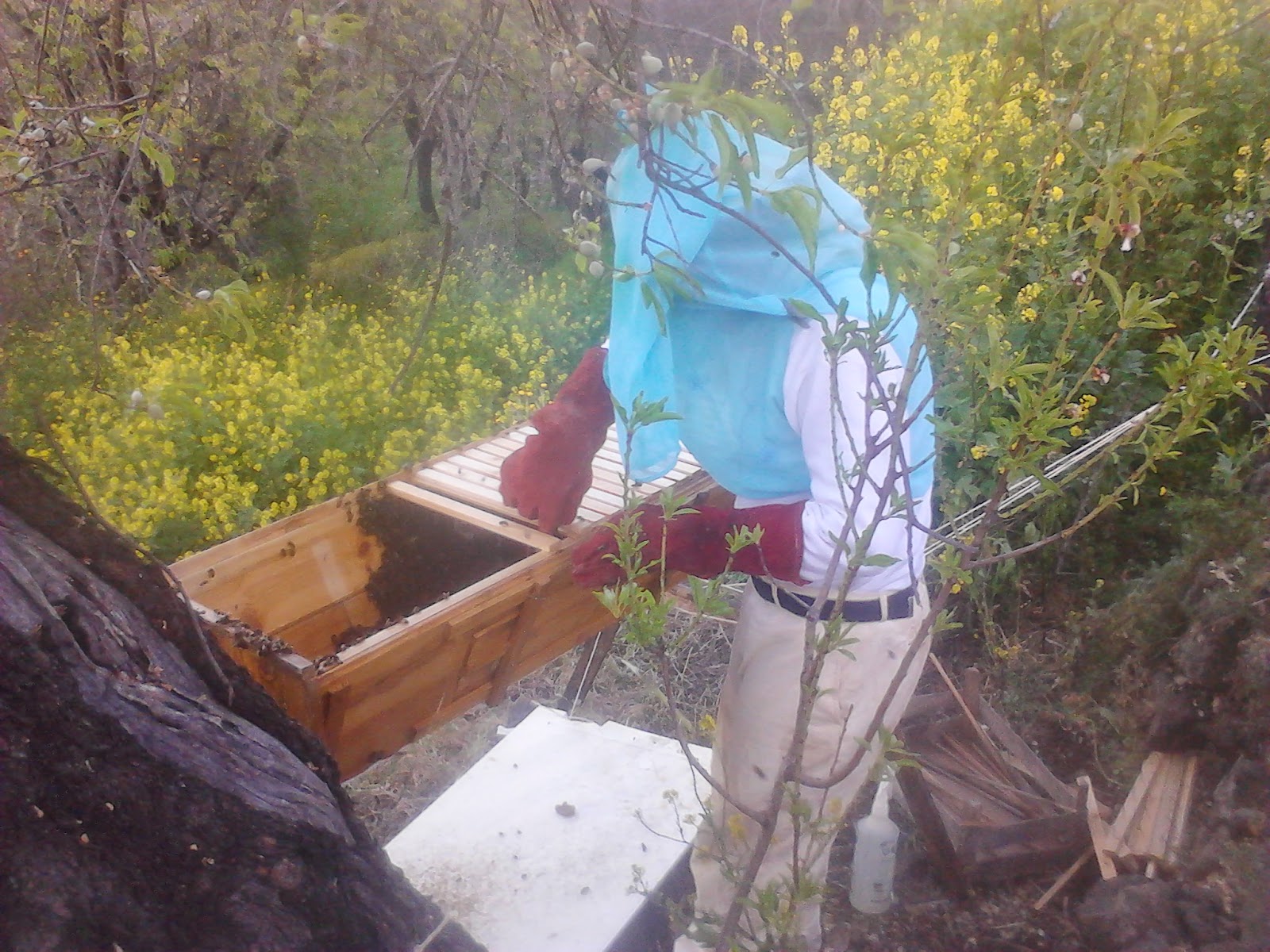

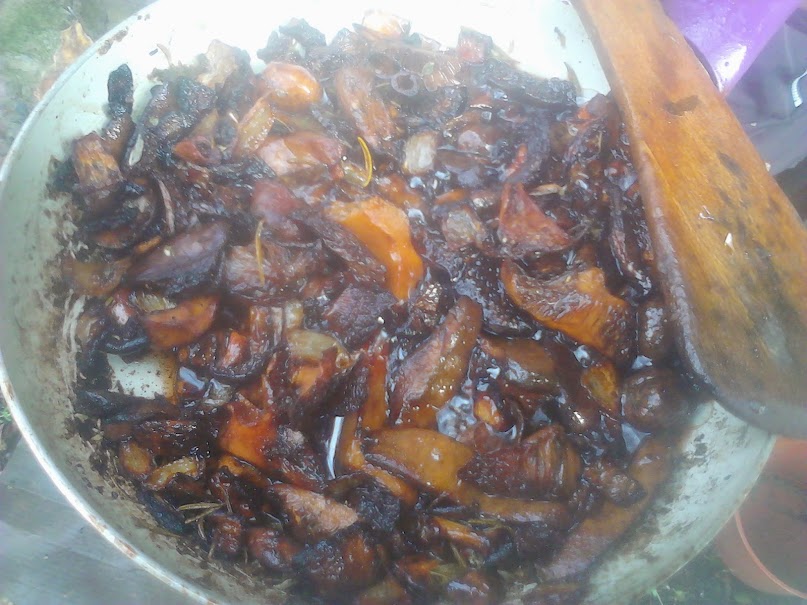

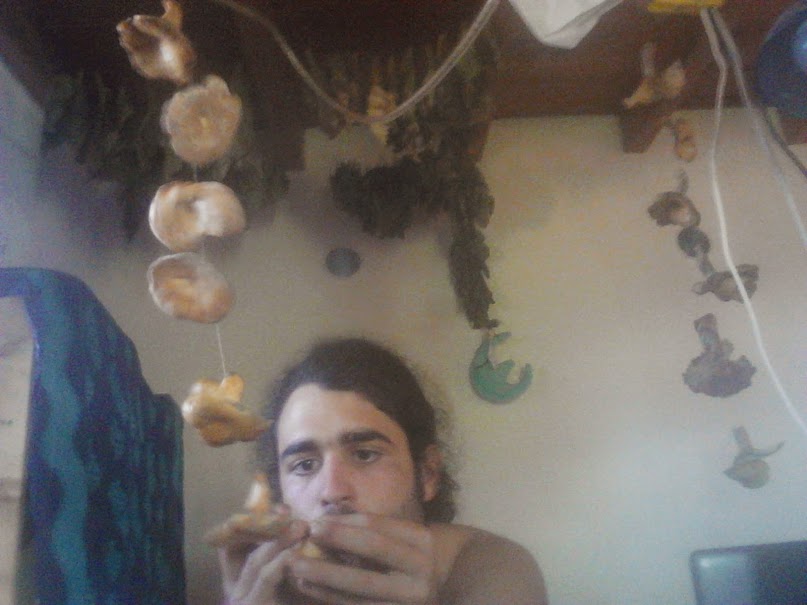
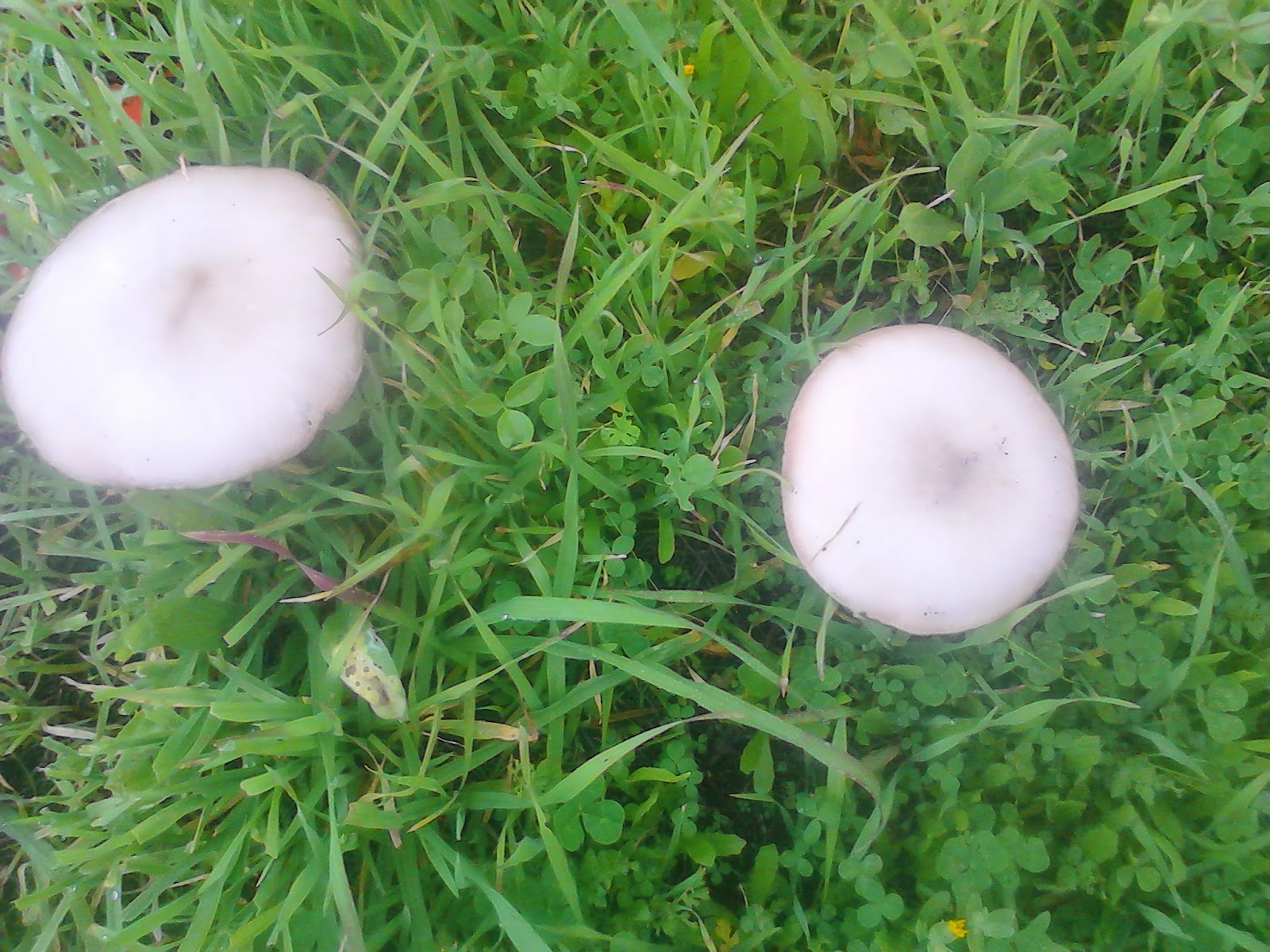

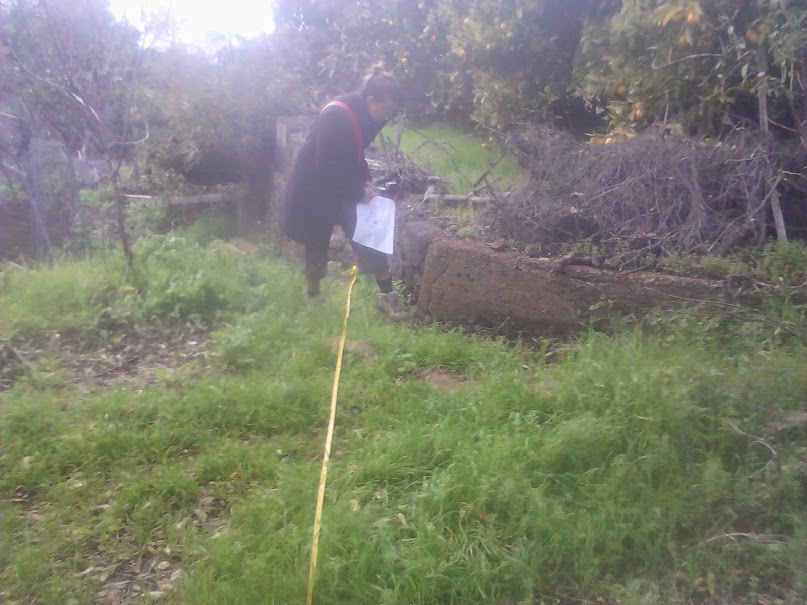
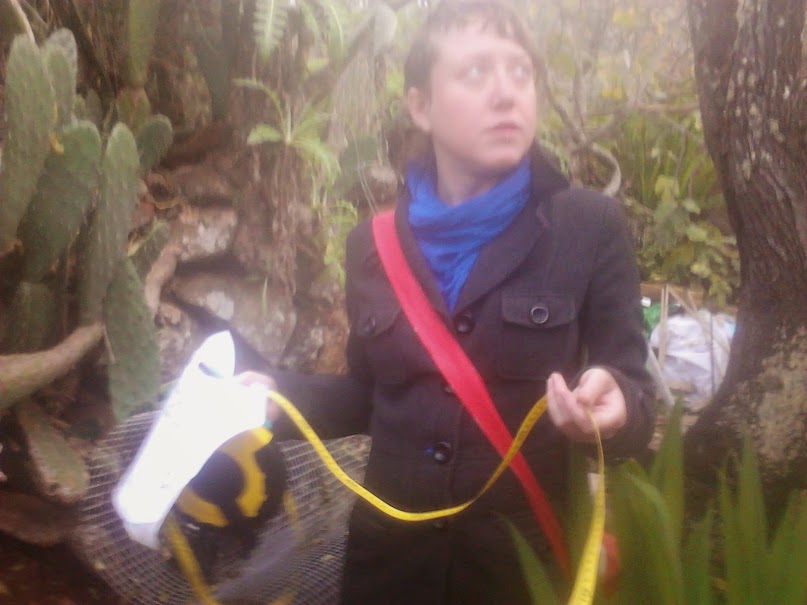













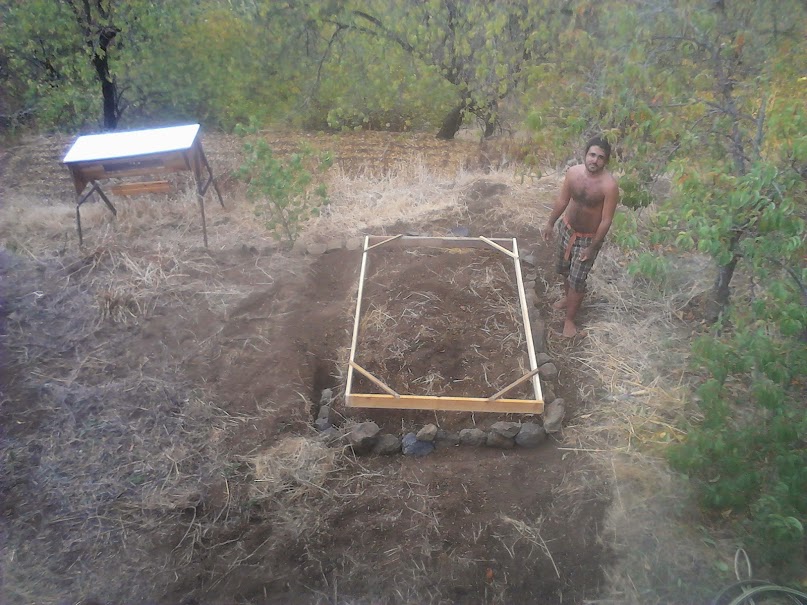
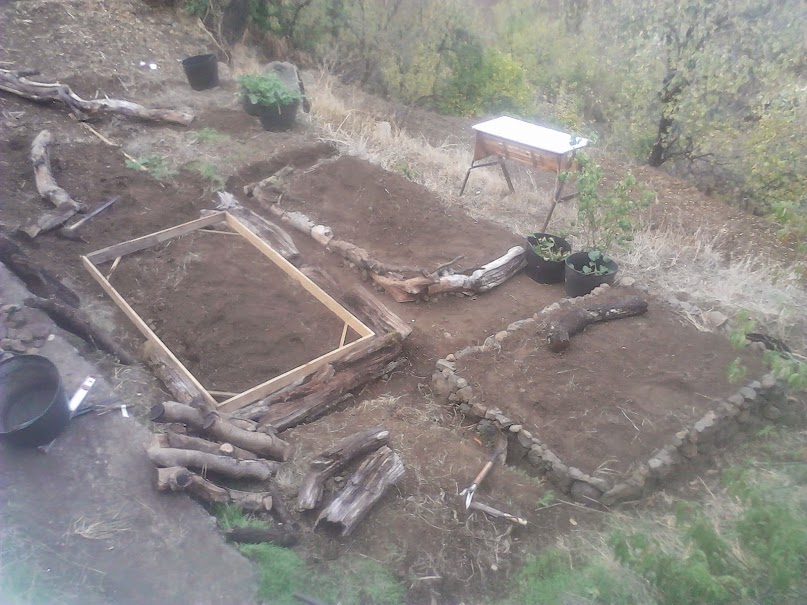
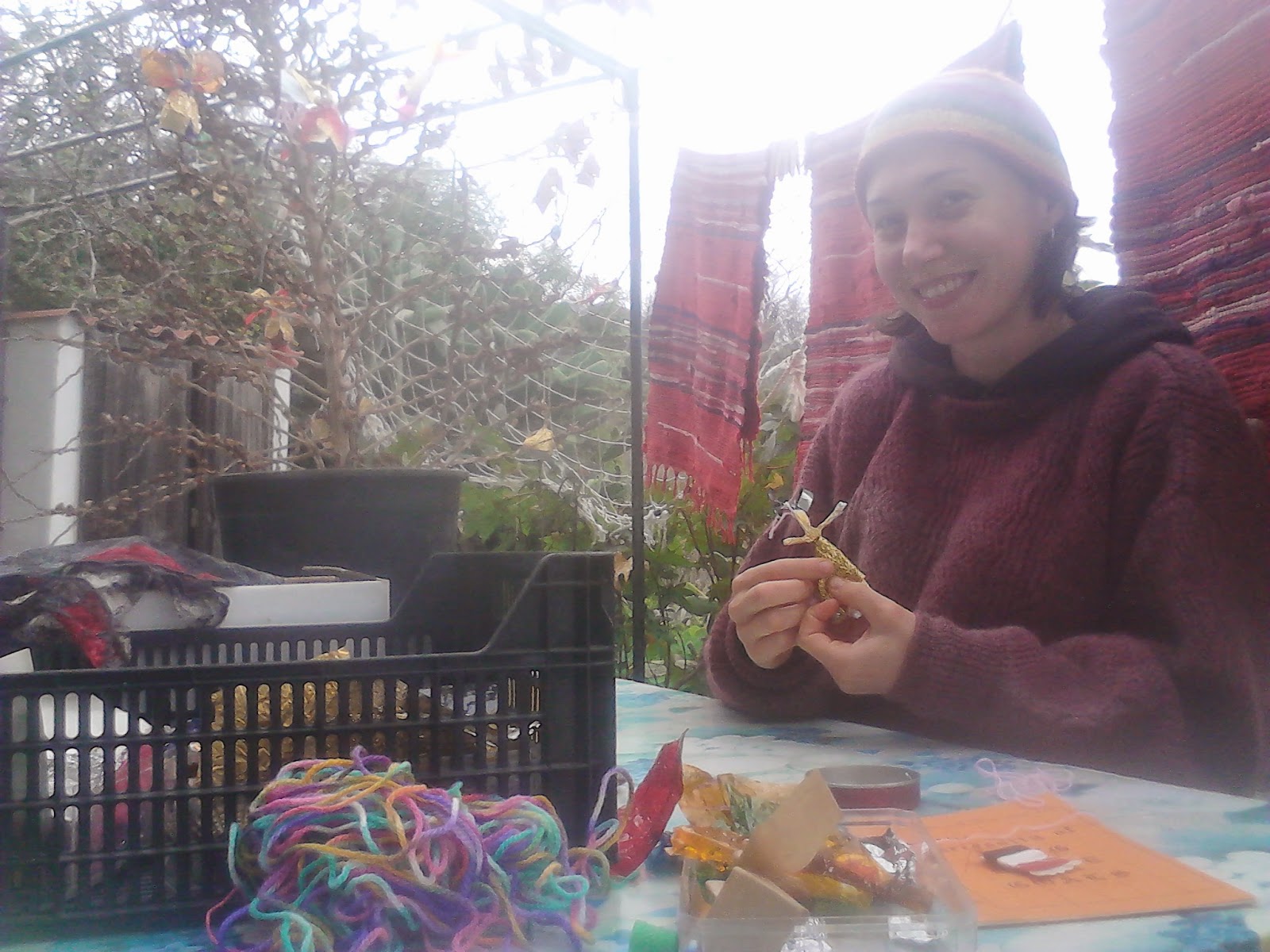



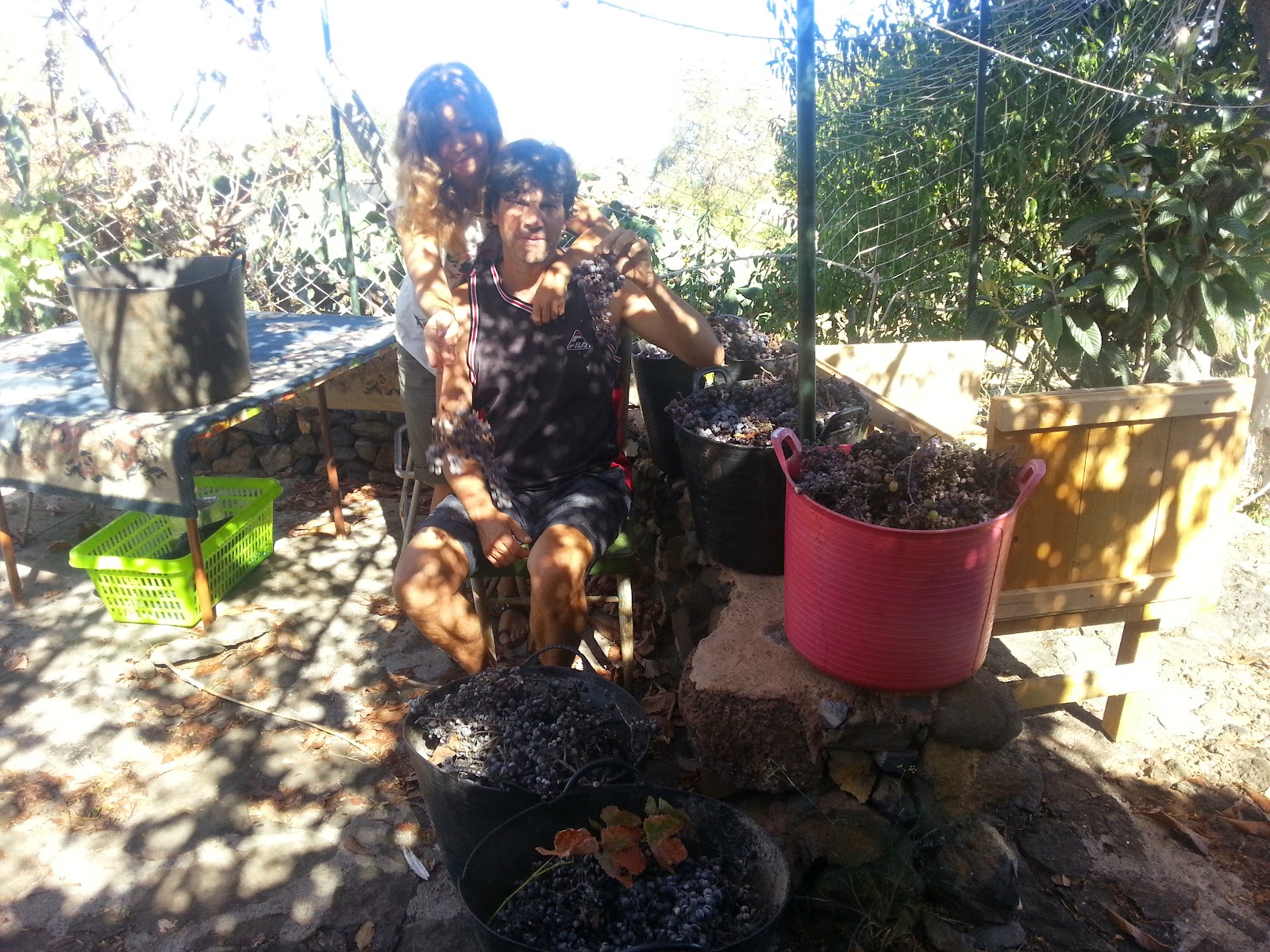

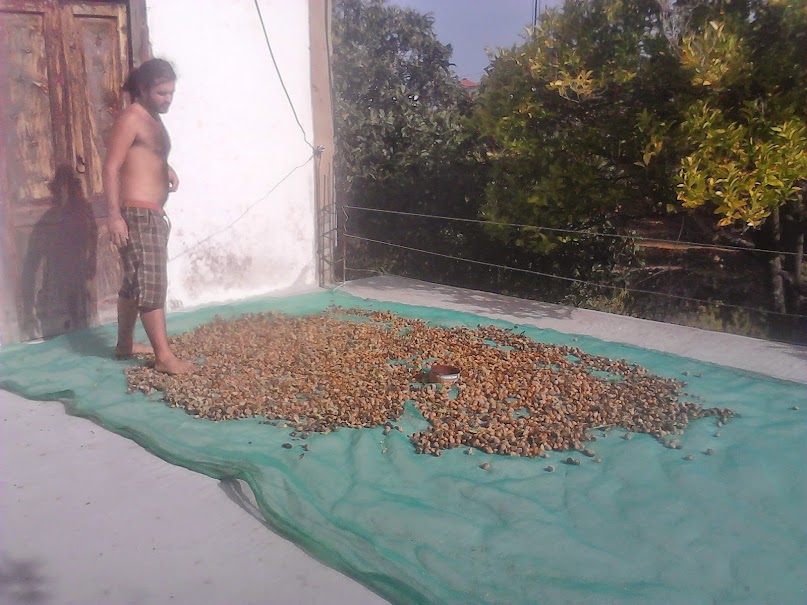
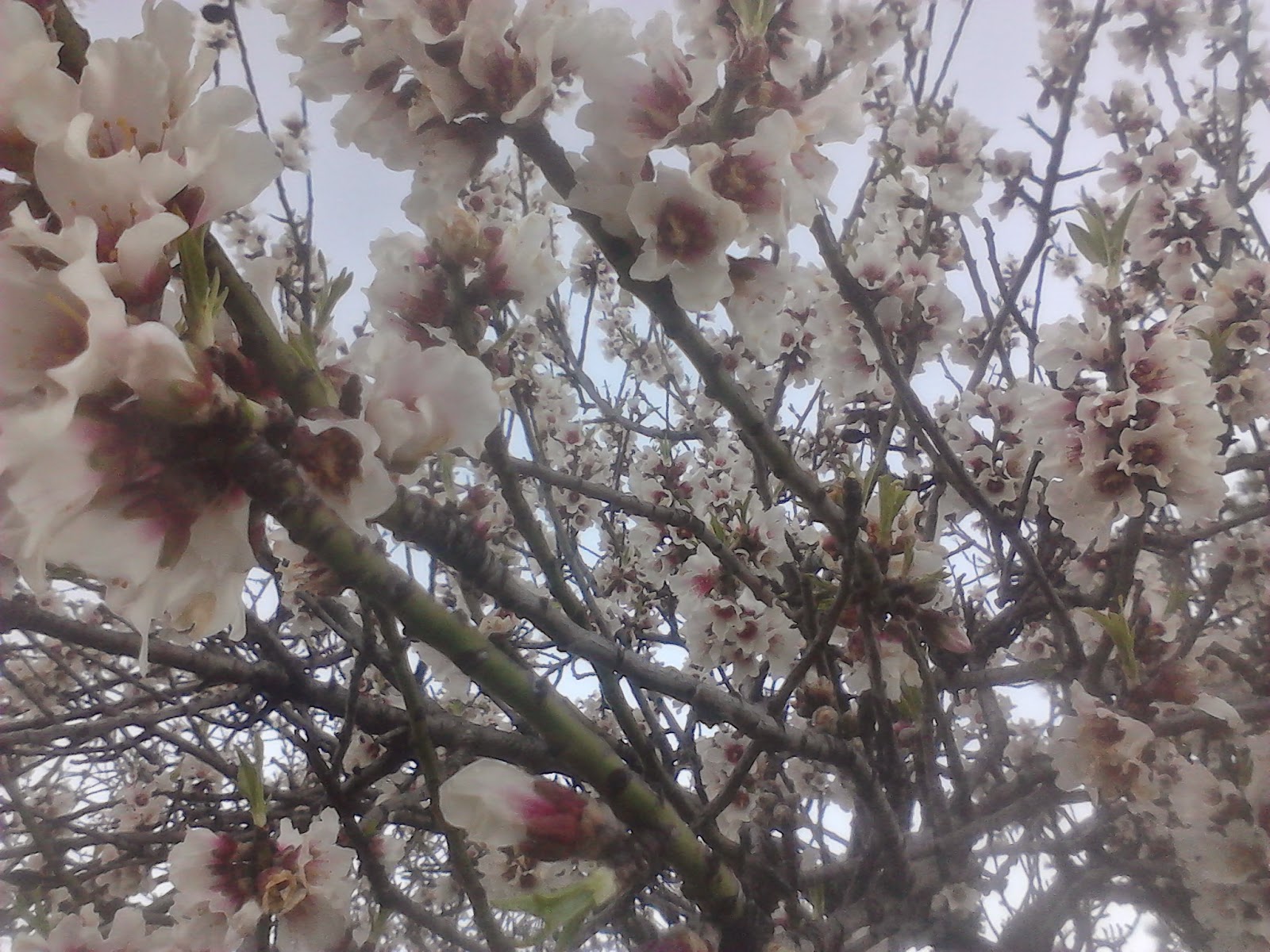
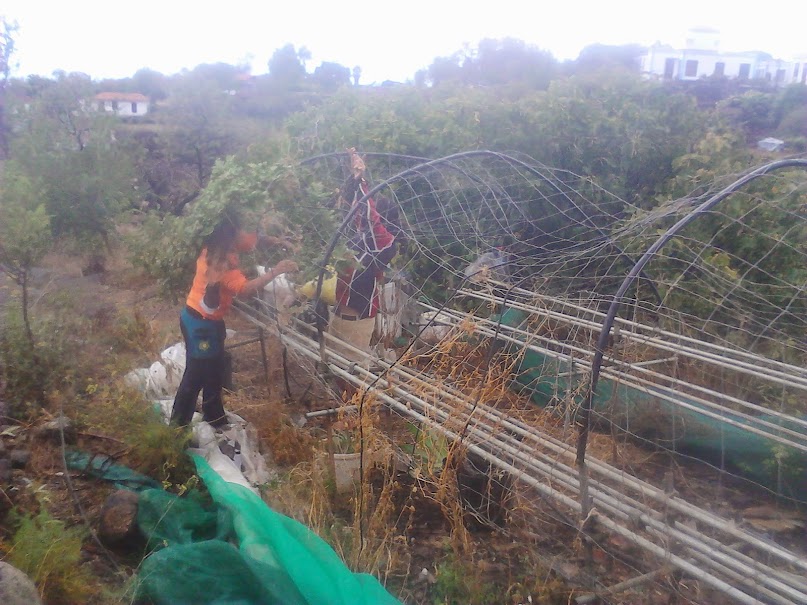









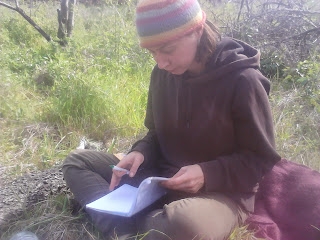








No comments: